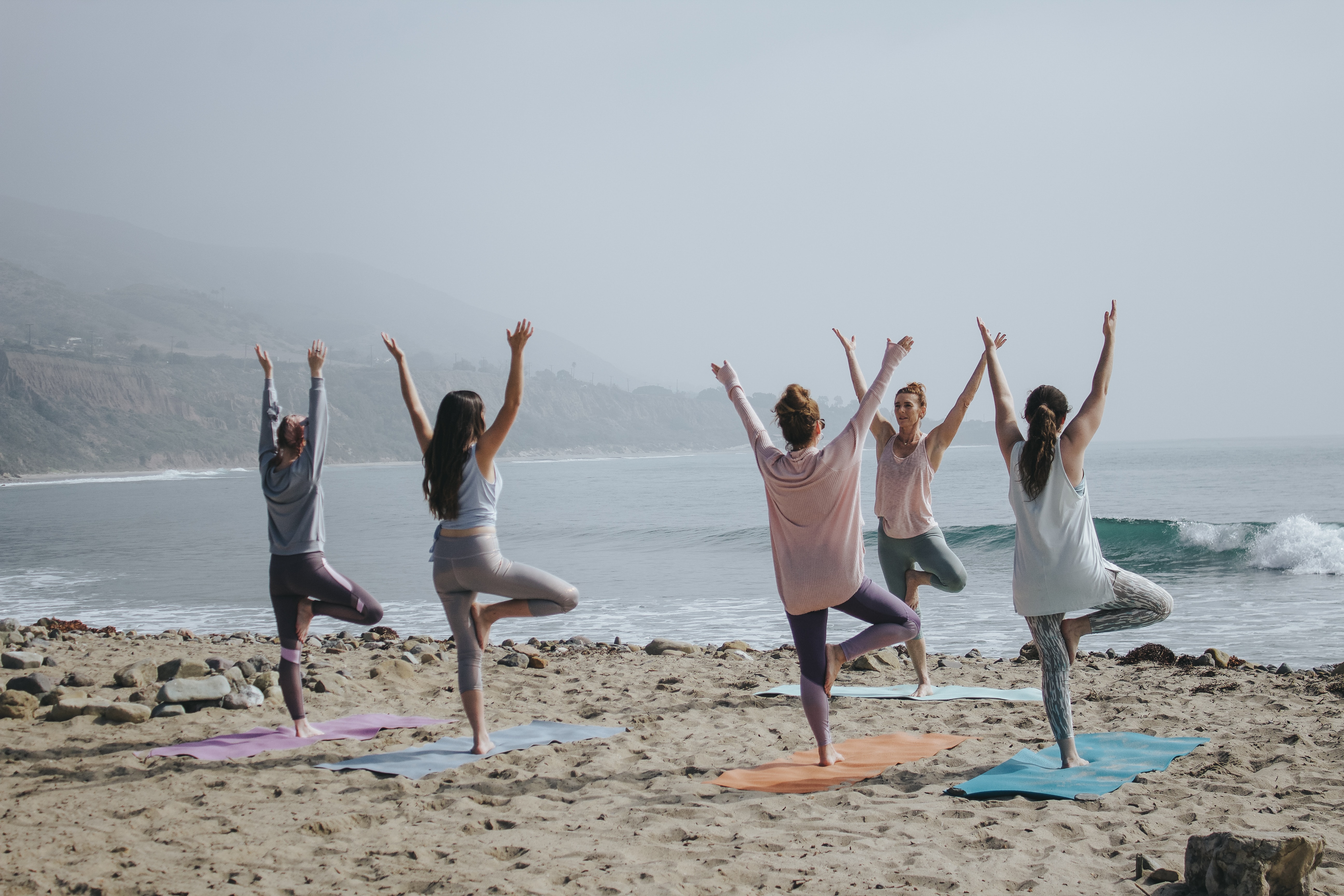The past few years have had a major impact on consumers everywhere—and now it seems that they are ready to come back feeling better than ever with an increased focus on wellness. How do we know this? According to Mind Body Online, 59 percent of Americans reported that they plan to focus on their health and wellbeing in 2022 to find ways to reduce the stress that is affecting them.
It also seems that younger generations have felt the effects of the pandemic more than their older counterparts. Fifty-seven percent of Gen Z and 53 percent of Millennials shared that the pandemic had a negative impact on their mental health, compared to only 37 percent of Baby Boomers.
There's no denying it: people are starting to care more about their health and wellbeing. From the rise of fitness trackers to the popularity of healthy eating, it's clear that consumers are ready to make a change. But this new trend can be tricky for brands. How can they keep up with all of the latest health trends and meet the demand for better products? It's not easy, but there are a few things companies can do to stay ahead of the curve.
How the COVID-19 Pandemic Has Impacted the Wellness Industry
Even before the pandemic, the health and wellness industry was a $4.5 trillion business. But after a health crisis rocked the world, changed nearly every consumer category, and transformed how consumers view their health, the wellness sector looks a little different than it did before.
For many, the COVID-19 pandemic transformed their idea of needing to make health-based choices and take care of their physical and emotional well-being. In fact, in one study shared by the World Economic Forum, 62 percent of polled Americans shared that their health is more important to them now than it was before the onset of the pandemic. This report also found that generally, people are more ready to embrace changes in their lifestyle to address their overall wellness.
Consumers have adapted to life in this new era, which means less time at the gym or fitness studio, and more time at home—which means more at-home fitness and wellness options.
As shared by the U.S. Chamber of Commerce during the first year of the pandemic, Beth McGroarty, the Vice President of Research for the Global Wellness Institute stated that "billions will be lost in the wellness industry in 2020 because of months of shuttered brick-and-mortar businesses… at the big-picture, long-term level, the case for the wellness concept and wellness markets post-pandemic looks very bullish."
“Health and Wellness:” A Broader Scope
When talking about how consumers view the health and wellness sphere, it’s important to note that this no longer just applies to physical wellness or solutions to achieve peak fitness. It also refers to a person’s emotional and psychological health; their holistic health. After being isolated from friends and family for so long, consumers aren’t just hoping to find the next fitness trend; they are also looking for ways to cope with the stress and anxiety they have been feeling over the past 2+ years.
Marketing Dive reported that 66 percent of consumers are more conscious of their physical and mental health in 2022 than they have been in previous years. Other major concerns consumers have include finding time for self-care or “me time” as well as spending less time on social media.
Businesses today can take this information to heart by helping consumers see how brands can play a role in their wellness, and how their products or services will improve consumers’ total wellbeing.
An Increased Demand for Personalization
Many wellness-minded consumers already know that a more personalized fitness plan is the key to better results. But what’s surprising is that more and more consumers of health and wellness treatments, products, and services are seeking out personalization from the brands they interact with.
Personalization has hit the global health and wellness consumer market. In the US, UK, and Germany, the percentage of customers who report valuing personalization is around 88 percent. What do brands need to keep in mind? Anna Pione, a McKinsey partner shared, “Based on our research, consumers aren’t necessarily demanding individualized wellness products. It’s more about mass customization. Consumers want a product that is tailored to them and that works for them, but that doesn’t mean companies can’t do that in a smart and cost-effective way.”
Not only does this mean that brands must figure out how to deliver and scale both hyper- and semi-personalized content, but personalization should be an integral part of media planning and buying, too. Customized ads on CTV, on social media, in emails, and across a variety of channels will help consumers feel seen and heard in their search for personalized wellness solutions.
Many brands engaged in marketing already know that emails with a personalized subject line have a 6.6 percent higher open rate than emails that are not personalized. But what they may not realize is just how personalized media planning and buying can partner with the demand for personalization in the wellness sector.
Digital Commerce 360 shared that by the end of 2022, marketers will spend 87 percent of their advertising dollars on digital marketing strategies, thanks to the increased use of mobile devices. This opens the door for programmatic and personalized advertising.
Potential ad spaces that lend themselves well to personalization and programmatic media buying in our digital world for wellness-minded consumers
- Video games and other internet of things (IoT) devices like smartwatches and fitness trackers
For wellness-minded consumers, this provides a unique opportunity to customize their experience and get the most out of their devices. By syncing game data with fitness tracking information, for example, you can create a more personalized gaming environment that is tailored to your specific needs. - Over-the-top (OTT) and connected TV (CTV) advertising
Advertisers are now able to target their ads more precisely than ever before, thanks to the wealth of data that is available about viewers. The growth in this medium can be attributed to a number of factors: the proliferation of smart TVs and streaming devices; the rise of "cord-cutting" and "skinny bundles"; and the growing demand for engaging interactive video content. - Personalized ads on apps and mobile devices
The explosion of health & wellness apps over the past few years has been staggering. There are now apps for virtually every type of physical and mental health condition, ranging from anxiety to diabetes to chronic pain. There are a few key reasons why these apps have become so popular. First, they're often much cheaper than traditional therapy or medication. Second, they're incredibly easy to use; most only require a few taps on your phone to get started. And finally, they offer a high level of privacy and anonymity; you can access them from anywhere in the world without anyone knowing.
A Culture of Wellness Influencers
One of the biggest players in the health and wellness sphere seems to be the emergence of influencers, who have a great deal of sway over consumers. Rethink Retail shared that somewhere between 10 and 15 percent of consumers in the US, Europe, and Japan not only follow social media influencers but have also made at least one purchase based on the recommendations of these influencers. These figures are even higher in places like China and Brazil.
While the rise of influencer culture has been significant, brands should take note that consumers are very adept at detecting influencers who are merely recommending products because they have been paid to do so.
To make the most of social media influencer marketing strategies, brands should seek out credible influencers—especially those who have a background or specialization in a particular health and wellness category.
What’s more, Rethink Retail also shared another quote from Anna Pione, who said of partnering with influencers:
“Brands should seek influencers who are a “natural fit with their products or services, and therefore, even if there is an economic transaction going on for that recommendation or promotion, it is still done in a way that comes across as much more genuine and authentic to consumers.”
Helping You Make Intelligent Media Decisions
Undoubtedly, COVID-19 impacted the world. 49 percent of Americans report feeling that their lives will remain “significantly changed in a post-pandemic world.”
The mass population stayed at home for their wellness. Customers were not receiving outside affirmations from strangers, friends, or family members in person. Going to their gym, staying active in group settings, or being publically social was not an option. And, due to social distancing, people were no longer seeing print advertising in the form of billboards, print handouts, or passed along business cards on a day-to-day basis. They replaced print advertising with digital screens. Because when a continuously evolving environment, where consumers sped through life had stopped in its tracks, people anticipated hearing from their favorite brands. After all, the pandemic forced consumers to place their mental, physical, and entire well-being underneath a microscope. But to fill the gap between consumers' health awareness and brands was influencers, personalization, and media.
We understand that technology and consumption habits are rapidly changing after the pandemic, but brand relevance remains the same for consumers. At MBI, we strategize those habits and implement media choices for brand differentiation and exponential growth. In strategizing processes, our teams search for the best upcoming trends while maintaining compatibility for optimized messages. We continuously invest in thought-leadership and proprietary research so that we can provide you with unparalleled insights and recommendations.
In an evolving post-pandemic environment, are you ready to adapt and make intelligent media decisions? Plan on growth and success at MBI and connect with us today!

